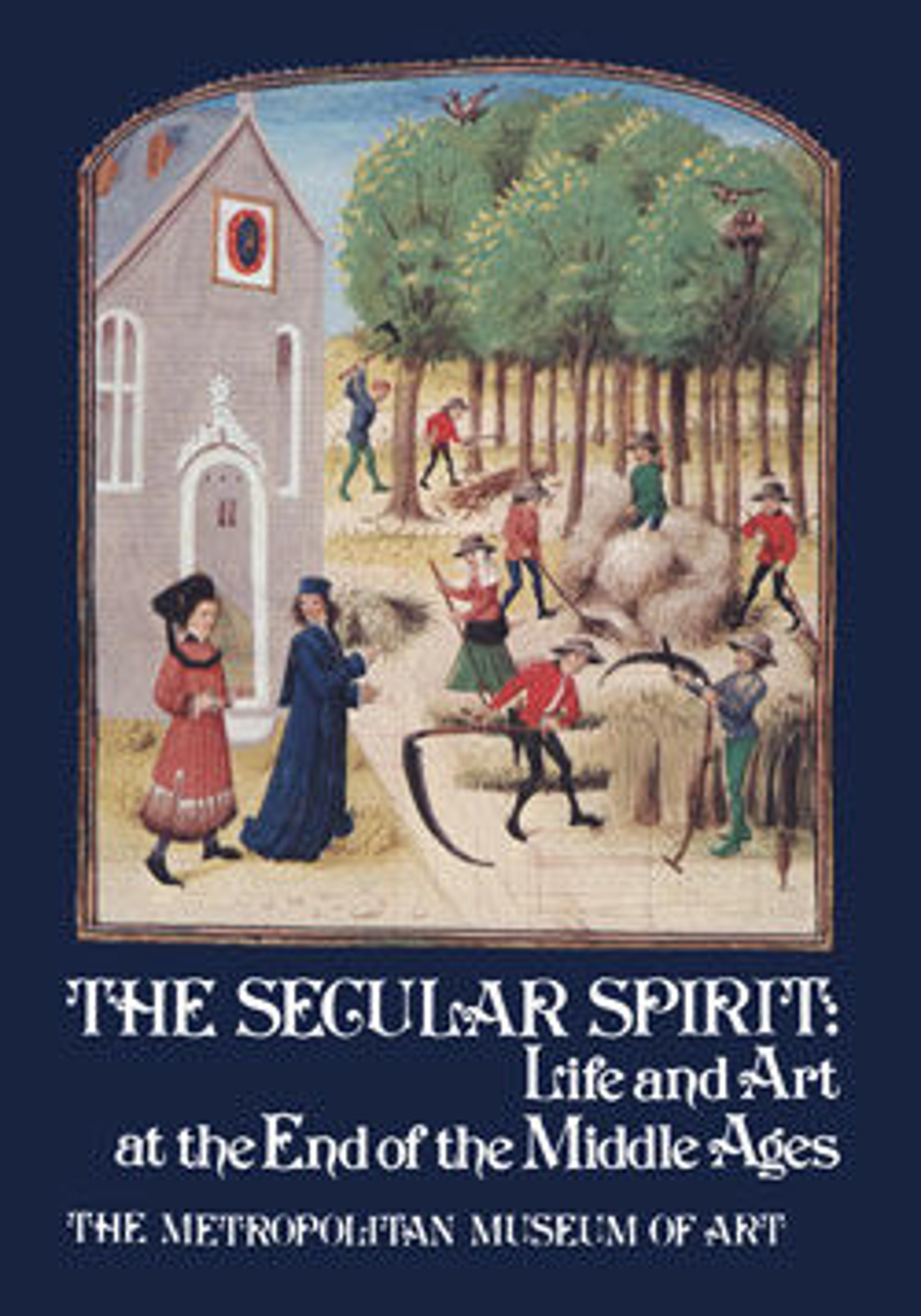Coffret
Coffrets and caskets, which were of great importance for the storage of household goods, were also valued by medieval travelers, who frequently carried with them a major portion of their possessions. For this purpose, containers of a wide variety of shapes and sizes existed, all intended to secure the safety of the objects enclosed. Iron caskets and coffrets of wood, covered with leather or other material and bound with iron, were more common.
The present coffret is an example of one of the most common and universal types of caskets produced during the fifteenth century and is known as coffret à mailles or coffret à la maniere d’Espagne. Such coffrets were made of a wooden core, covered with rough linen, as here, or dyed leather. On the outside there were two layers of iron openwork, one superimposed on the other allowing the decorative cover of the core to show through. Iron bars reinforced the cover, and a deceptively elaborate, though rudimentary, lock spanned the width of one end of the coffret. Two rings permitted it to be attached by thongs or chains to a saddle, or, possibly, to be secured inside a larger chest too heavy to be easily stolen. Since it has been suggested that these coffrets were used for the transport of precious possessions, it is interesting to speculate that the suspension of the coffret within a larger chest might have been intended to protect these valuables from otherwise unavoidable damage caused by buffeting and jouncing.
The present coffret is an example of one of the most common and universal types of caskets produced during the fifteenth century and is known as coffret à mailles or coffret à la maniere d’Espagne. Such coffrets were made of a wooden core, covered with rough linen, as here, or dyed leather. On the outside there were two layers of iron openwork, one superimposed on the other allowing the decorative cover of the core to show through. Iron bars reinforced the cover, and a deceptively elaborate, though rudimentary, lock spanned the width of one end of the coffret. Two rings permitted it to be attached by thongs or chains to a saddle, or, possibly, to be secured inside a larger chest too heavy to be easily stolen. Since it has been suggested that these coffrets were used for the transport of precious possessions, it is interesting to speculate that the suspension of the coffret within a larger chest might have been intended to protect these valuables from otherwise unavoidable damage caused by buffeting and jouncing.
Artwork Details
- Title:Coffret
- Date:15th–16th century
- Culture:European
- Medium:Iron, wood core, textile interior
- Dimensions:Overall: 6 3/8 x 13 1/2 x 8 5/8 in. (16.2 x 34.3 x 21.9 cm)
- Classification:Metalwork-Iron
- Credit Line:The Cloisters Collection, 1955
- Object Number:55.76.4a, b
- Curatorial Department: Medieval Art and The Cloisters
More Artwork
Research Resources
The Met provides unparalleled resources for research and welcomes an international community of students and scholars. The Met's Open Access API is where creators and researchers can connect to the The Met collection. Open Access data and public domain images are available for unrestricted commercial and noncommercial use without permission or fee.
To request images under copyright and other restrictions, please use this Image Request form.
Feedback
We continue to research and examine historical and cultural context for objects in The Met collection. If you have comments or questions about this object record, please contact us using the form below. The Museum looks forward to receiving your comments.
